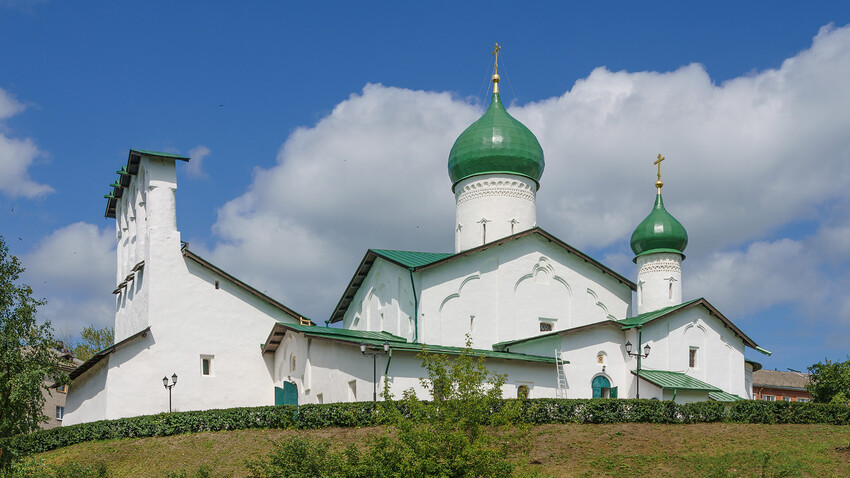

During his visit to Russia in 1921, he made several trips around the country, including a visit to Pskov. The architect was impressed by the ancient churches, especially the Church of the Epiphany in Zapskovye.

The white stone church on the right bank of the Pskova River was built at the end of the 15th century. From there, one can clearly see the surrounding area - it is impossible to take your eyes off the majestic landscape. It is a complex architectural construction with galleries and a powerful belfry to match it.

The outline of the Pskov church can be seen in the church of Notre-Dame-du-Eau in Ronchan, which Le Corbusier worked on in the mid-1950s. The substantial concrete building, resembling a majestic ship, absorbed the architect’s most vivid impressions - from the ruins of the Greek Parthenon, the Roman villa of Hadrian to the Pskov Church of the Epiphany.

"It is often said that, when designing the church in Ronchan, Le Corbusier was inspired by the image of the Church of the Epiphany from Zapskovye. I think this is partly true, because Russian medieval architecture really made a great impression on him, as evidenced by his numerous letters and diary notes," says architectural critic Olga Mamaeva. “But, it is hardly possible to compare these buildings directly; it would be more correct to talk about individual rhymes, which are not difficult to guess. The fusion with nature, the building's integration into the landscape - both churches are located on a hill - is the first thing that catches the eye. Proportionality, a complex, asymmetrical composition, white walls, a deliberate refusal to be decorative - all this, of course, makes the Pskov church similar to the building in Ronchamp. But, it is important to remember that Le Corbusier's architecture is a synthesis of different traditions, sometimes contradictory, but harmoniously coexisting with each other."
The French architect's masterpiece was included in the UNESCO World Heritage List in 2016, while the church in Pskov was included in it in 2019.
Dear readers,
Our website and social media accounts are under threat of being restricted or banned, due to the current circumstances. So, to keep up with our latest content, simply do the following:
If using any of Russia Beyond's content, partly or in full, always provide an active hyperlink to the original material.
Subscribe
to our newsletter!
Get the week's best stories straight to your inbox